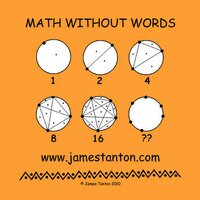
Fred G. Harwood
@harmath
Maths teacher, mentor teacher, ed consultant fascinated with discovery learning and inquiry, problem solving, assessment, visualization & making a difference.
ID: 56564844
https://harmath.wordpress.com/ 14-07-2009 01:36:39
11,11K Tweet
1,1K Takipçi
994 Takip Edilen








#MathStratChat Pam Harris To be different or to introduce another medium, let's think sandwiches. A 12 inch sandwich is a footlong. A third of it is 4 inches and 2/3rds is then 8 inches. So 11 inches – 8 inches is 3 inches or 3/12 of a foot. Is there a name for a 1/4 sandwich?






#MathStratChat Pam Harris 8% = 8/100 = 4/50 4/50 x 9/9 = 36/450 so 36 is 8% of 450

#advocacy4aging Advocacy for Aging BC I love seeing caring intelligence rewarded

#MathStratChat Pam Harris For subtraction, I really like shifting equally. Here I'd do two moves to make it simpler. 7 less and 500 more: 6015 – 3507 = 6008 – 3500 = 6508 – 4000 = 2508


Shades of David Marain , I found myself on New Year's Day, observing the intersecting shadow lunes that form on my Metamucil bottle by the various overhead pot lights.

James Tanton Wayne, can you see the flaw in my reasoning. I agree with the first 4 being F(2n), but n=5? 1x1x1x1x1 one way; 1x1x1x2 four ways; 1x1x3 x3; 1x4 x2; 2x2x1 x3; 2x3 x2; 4x1 x2; 5 1+8+9+8+12+12+8+5 = 63



